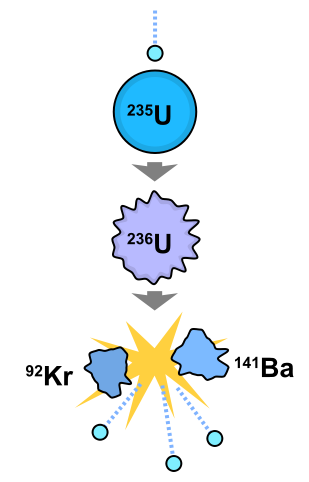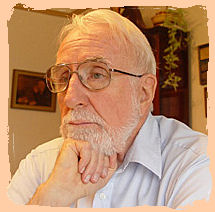Thoughts on meeting the Clean Energy target
 President Obama has declared "a bold but achievable goal of generating 80 percent of America's electricity from clean sources by 2035." How we are to get there is not spelled out, so there is room for speculation about just what the administration has in mind.
President Obama has declared "a bold but achievable goal of generating 80 percent of America's electricity from clean sources by 2035." How we are to get there is not spelled out, so there is room for speculation about just what the administration has in mind.
In searching for enlightenment, one might turn to the Department of Energy's Energy Information Administration (EIA), which projects energy supply and demand to 2035. The EIA predicted in December 2010 that electricity consumption will grow "from 3,745 billion kilowatt-hours in 2009 to 4,880 billion kilowatt-hours in 2035 . . . , increasing at an average annual rate of 1.0 percent." Well and good, but the EIA is of no help on the clean energy front. The agency's accompanying chart would seem to be seriously out of step with Obama's 80-percent goal, because it foresees 68 percent coming from coal and natural gas in 2035.
But wait a minute-we haven't yet discovered what constitutes a "clean source."  For that, we can perhaps go to the U.S. Senate and look at "S.20-Clean Energy Standard Act of 2010"-a bill introduced last year but never voted on, which is probably just as well. Its definitions of "clean energy" could drive a person to drink. There are 13 categories of clean energy, labeled (A) through (L), many of them with definitions convoluted enough to curl your toes. (If you feel up to it, brace yourself and read the bill.)
For that, we can perhaps go to the U.S. Senate and look at "S.20-Clean Energy Standard Act of 2010"-a bill introduced last year but never voted on, which is probably just as well. Its definitions of "clean energy" could drive a person to drink. There are 13 categories of clean energy, labeled (A) through (L), many of them with definitions convoluted enough to curl your toes. (If you feel up to it, brace yourself and read the bill.)
I will comment only on category (I), "qualified nuclear energy," whose definition, while surprising, seems at first to be not at all complex. Here it is: "The term 'qualified nuclear energy' means energy from a nuclear generating unit placed in service on or after the date of enactment of this section." In other words, the output of the 104 currently operating nuclear power plants in the United States would not qualify as clean according to the Clean Energy Standard Act of 2010-except some of it might, after all, because there is this added complexity: "incremental" nuclear energy from current plants does qualify as clean (with limitations I won't go into, but you can read about them in the bill):
"(13) INCREMENTAL NUCLEAR PRODUCTION- The term `incremental nuclear production' means the incremental quantity of energy generated by an existing nuclear facility over the average quantity of energy generated at the facility during the preceding 3-year period that is attributable to permanent efficiency improvements or capacity additions made on or after the date of enactment of this section."
 The point of all this is that there's no telling what weird and wonderful national energy policy will emerge as the vector sum of the various political forces influencing the decision-making process.
The point of all this is that there's no telling what weird and wonderful national energy policy will emerge as the vector sum of the various political forces influencing the decision-making process.
From a simple-minded technical viewpoint, the president's 80 percent target should mean that four-fifths of our electricity would be generated by nuclear and the non-nuclear renewables by 2035, with the remaining one-fifth from fossil fuels. Using the EIA's numbers, we have average electricity consumption of 427 GW (in 2009) growing to 557 GW in 2035, of which 445 GW would be from carbon-free sources-mainly nuclear-and 111 GW from coal and gas (currently about 340 GW). Note that with today's 100-odd GW of nuclear power excluded from the "clean" category as defined in S.20, the 80 percent goal leads to 545 GW from carbon-free sources and 11 GW from coal.
To me, even the first of those outcomes seems too unrealistic (politically, not technically) to be contemplated by President Obama or Energy Secretary Chu. Presumably, then, their assumption is that large-scale carbon sequestration will become practical. Or maybe the creative souls who came up with the definitions in S.20 will work some more semantic magic. But few goals are cast in concrete, and most likely this one will be modified as time passes.
 Let's face it-the United States is constitutionally unable to formulate and implement a coherent, rational, long-term energy policy. As it becomes increasingly evident that nuclear fission is destined to supply the bulk of the world's energy needs, our erstwhile international leadership in the development and deployment of the technology continues to recede.
Let's face it-the United States is constitutionally unable to formulate and implement a coherent, rational, long-term energy policy. As it becomes increasingly evident that nuclear fission is destined to supply the bulk of the world's energy needs, our erstwhile international leadership in the development and deployment of the technology continues to recede.
We live in interesting times.

Stanford
George Stanford is a nuclear reactor physicist, part of the team that developed the Integral Fast Reactor. He is now retired from Argonne National Laboratory after a career of experimental work pertaining to power-reactor safety. He is the co-author of Nuclear Shadowboxing: Contemporary Threats from Cold War Weaponry.



